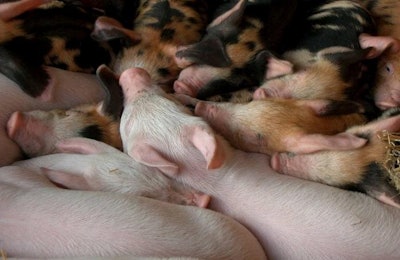
From WATTAgNet:
More than two years ago, in April 2013, porcine epidemic diarrhea (PED) virus was first detected in the United States. Swine enteric coronavirus disease (SECD) viruses, which include PED virus and swine delta coronavirus, killed 7 million piglets within the first year of detection in the U.S.
While the spread of the disease has slowed in the past year, more than 10 percent of the U.S. pig herd has been wiped out from PED virus, with different strains circulating throughout the country. The entire U.S. pig herd is highly susceptible to infection. Farrow-to-finish operations experience the most severe impact with exceptionally high piglet mortality.
The industry and regulators have learned a lot about the disease and how it spreads in the past two years. Just last month, the U.S. Department of Agriculture released a root cause investigation report that identified the reuse of contaminated flexible intermediate bulk containers, also known as tote bags, as the most likely cause for how the SECD viruses entered the U.S.
Biosecurity has always been paramount to preventing the spread of PED virus. As winter approaches, feed mills and pig farms are urged to review their biosecurity protocols, with a focus on:
- Cleaning, sanitizing and disinfecting
- Allowing for a window
- Heat
- Six days’ rest
- Ingredient sourcing
- Storage
- Young swine diets
- Sampling
PEDv in the US, two years later
The porcine epidemic diarrhea virus is beyond the scope of eradication, but it has become more manageable and containable since entering the US two years ago.

















